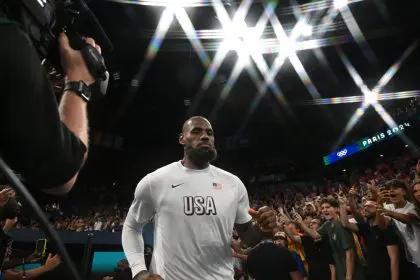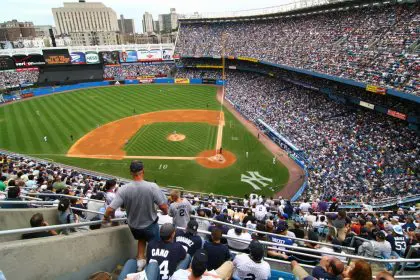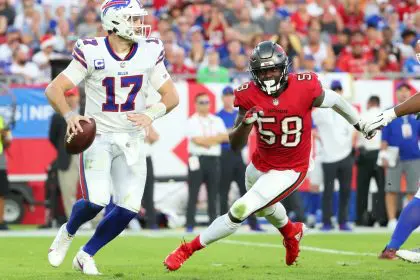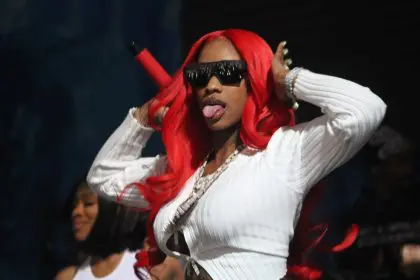The NBA’s financial landscape is about to enter completely uncharted territory, and we’re talking about numbers that would make even billionaires do a double-take. Shai Gilgeous-Alexander’s recent supermax extension brought him tantalizingly close to earning $1 million per game, but he won’t be the one to break that barrier. The next generation of superstars is positioned to absolutely shatter every salary record we’ve ever seen.
When you really break down the math, we’re looking at players who will earn more in a single game than most people make in 20 years. The financial revolution happening in professional basketball isn’t just changing how we think about player salaries – it’s rewriting the entire economics of professional sports.
The supermax structure is creating financial monsters
The supermax extension system has become the ultimate wealth generator for elite NBA players, and the numbers are getting absolutely insane. These contracts start at 35% of the salary cap for players who meet specific criteria, and with the salary cap projected to double over the next decade, we’re looking at unprecedented financial territory.
Gilgeous-Alexander’s deal will pay him $79 million in its final year, which works out to $963,000 per game. That’s already mind-blowing, but it’s just the beginning. The compound effect of rising salary caps means each new supermax will dwarf the previous ones.
The progression is staggering when you look at the timeline. Stephen Curry’s first supermax started at $34.7 million, and it took five years to reach $40 million. But the acceleration is incredible – now we’re looking at jumps of $10 million or more between contract classes.
Anthony Edwards is perfectly positioned to break the barrier
Edwards has emerged as the most likely candidate to become the NBA’s first $82 million player, potentially earning over $1 million per game. He’s made two consecutive All-NBA second teams, putting him on track to sign a supermax in summer 2027 that could be worth up to four years and $345 million.
The timing couldn’t be better for Edwards. His contract would kick in just as the new TV deal money really starts flowing through the system, and he’d reach that $82 million threshold in the second year of his deal. We’re talking about a 26-year-old potentially making more per game than entire small-market team payrolls from previous decades.
Edwards isn’t the only candidate, though. Cade Cunningham and Evan Mobley both made their first All-NBA teams last season, positioning them for similar financial windfalls. The 2021 draft class could produce multiple players earning nine figures annually.
The new TV deal is completely changing everything
The NBA’s new 11-year, $76 billion television contract is the driving force behind this salary explosion. That’s $7 billion per season compared to the previous deal’s $2.7 billion annually – we’re talking about 2.6 times more money flowing into the league every single year.
To prevent the chaos that happened when Kevin Durant signed with Golden State after a 34% salary cap jump, the new CBA includes “cap smoothing” measures that limit increases to 10% per year. But even those “limited” increases compound into massive numbers over time.
The salary cap will pass $150 million next season and could realistically double to over $300 million by 2033-34. When you apply the 35% supermax formula to a $300 million cap, you’re looking at starting salaries over $100 million per year.
Future draft classes will make even more money
The really wild part is that Edwards and his contemporaries might look like bargains compared to what’s coming next. Players from the 2022 draft class like Paolo Banchero and Chet Holmgren, and especially Victor Wembanyama from 2023, could realistically sign contracts worth more than $100 million per year.
Wembanyama, in particular, could become the first player to earn $125 million annually if he continues developing at his current pace. By the time he’s eligible for a supermax, the salary cap could be high enough to support truly astronomical numbers.
Even shorter veteran extensions are reaching crazy levels. Devin Booker just signed a two-year deal worth up to $145 million, which has a higher annual value than most supermax contracts.
Other sports have already crossed the million-per-game threshold
The NBA isn’t actually breaking new ground here – other professional sports have already seen players earn over $1 million per game. MLB pitchers like Gerrit Cole crossed that barrier years ago with $35+ million contracts for roughly 32 starts per season.
The NFL has 84 players earning at least $1 million per game this season, with top quarterbacks making nearly $3 million per contest. The difference is volume – NBA players play 82 games plus playoffs, so their total compensation blows away other sports even when the per-game numbers are similar.
What makes the NBA unique is the combination of high per-game earnings and the sheer number of games played. When you’re making $1 million per game for 82 games plus playoffs, you’re looking at total annual compensation that dwarfs every other team sport.
The real value proves these contracts are actually bargains
Here’s the crazy part that most people don’t realize: even at $1 million per game, these superstar players are still being underpaid relative to their actual value. Gilgeous-Alexander generated an estimated $96 million in regular-season value last year through his on-court production alone.
That doesn’t even account for his impact on ticket sales, merchandise, franchise value, and championship success. When LeBron James returned to Cleveland in 2014, Forbes estimated he immediately added $100-150 million to the franchise value. Those numbers would be much higher today.
The math is simple but stunning: the NBA’s best players have always signed for discounts compared to their true economic impact, and that will still be true even when they’re making $1 million per game. In a world without salary restrictions, franchise-altering superstars could justify contracts worth $150 million per year or more.
So when we finally see that first $82 million contract and the inevitable outrage about players being overpaid, remember this: it’s probably still a bargain for what these generational talents actually bring to their teams and the league as a whole.
















